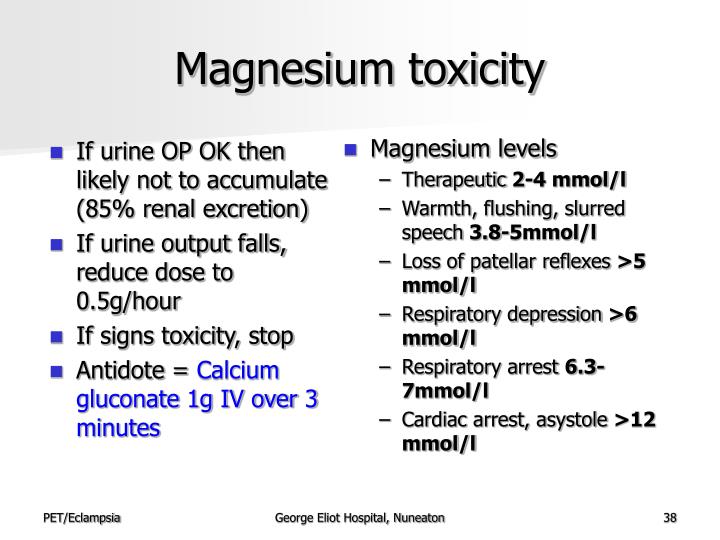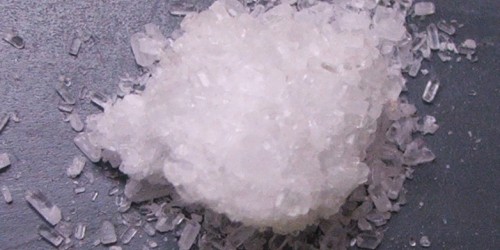


Therapeutic levels of total magnesium for treatment of toxemia of pregnancy (eclampsia) are 5–7.4 mg/dL (2–3 mmol/L, or 4–6 mEq/L). Determination of serum magnesium concentration is usually rapidly available. Very high levels can cause coma, respiratory arrest, and asystole ( Table II–33).ĭiagnosis should be suspected in a patient who presents with hypotonia, hypotension, and CNS depression, especially if there is a history of using magnesium-containing antacids or cathartics or renal insufficiency. Higher levels can cause cardiac conduction abnormalities, hypotension, and severe muscle weakness and lethargy. Moderate toxicity may cause nausea, vomiting, muscle weakness, and cutaneous flushing.

Repeated or excessive doses of magnesium-containing cathartics can cause serious fluid and electrolyte abnormalities. Orally administered magnesium causes diarrhea, usually within 3 hours. Pediatric deaths have been reported after the use of Epsom salt enemas.Ĭlinical presentation. Ingestion of 200 g of magnesium sulfate caused coma in a young woman with normal renal function. Patients with renal insufficiency (creatinine clearance <30 mL/min) are at higher risk with standard doses because of impaired clearance.Ĭommonly available antacids (Maalox, Mylanta, and others) contain 12.5–37.5 mEq of magnesium per 15 mL (1 tablespoon), milk of magnesia contains about 40 mEq/15 mL, and magnesium sulfate (in Epsom salts and IV preparations) contains 8 mEq/g. Although most acute or chronic overexposures do not result in hypermagnesemia, poisoning has been reported after IV overdose or massive oral or rectal overdose. Normal kidney function is essential for clearance because 97% of ingested magnesium is eliminated in the urine. Although best modeled with two-compartment pharmacokinetics, the average volume of distribution is about 0.5 L/Kg, and the elimination half-life averages 4–5 hours in healthy adults. The oral bioavailability ranges from 20–40% depending on the salt form.

The usual body content of magnesium is approximately 1700–2200 mEq in a 70-kg person it is stored primarily in bone and intracellular fluids. Magnesium also competitively antagonizes calcium at calcium channels, thus impeding calcium flux and impairing both muscle contraction and electric conduction. Hypermagnesemia amplifies the response to neuromuscular blockers. Elevated serum magnesium concentrations act as a CNS depressant and block neuromuscular transmission by inhibiting acetylcholine release at the motor end-plate.


 0 kommentar(er)
0 kommentar(er)
